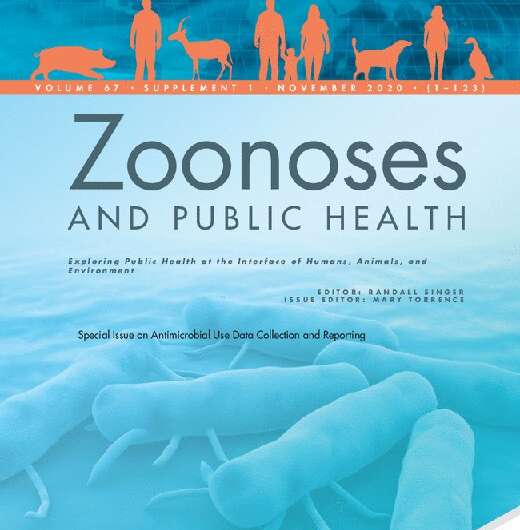Researchers collaborate to study antimicrobial use in food animal industries

Kansas State University and University of Minnesota researchers are collaborating with the Food and Drug Administration's Center for Veterinary Medicine and food animal industries to evaluate systems for collecting and evaluating antimicrobial use data in food animal production, including U.S. beef feedlot, dairy, swine, turkey and chicken production settings. The project is largely funded by the Center for Veterinary Medicine.
The researchers also are collaborating with the U.S. Department of Agriculture's Center for Epidemiology and Animal Health as they develop their data systems. Their results have just been published in a special issue of Zoonoses and Public Health, an international journal that publishes integrated and global approaches to disease transmission and public health at the interface of human and animal health.
Leading the collaborative research for beef feedlots and dairy is the K-State team, all connected to the university's College of Veterinary Medicine: Mike Apley, professor of production medicine; Brian Lubbers, associate professor of diagnostic medicine and pathobiology; and former graduate students Nora Schrag and Katie Hope, both now K-State doctoral graduates in pathobiology.
Collaborators at the University of Minnesota include Sandra Godden, dairy cattle; Randy Singer, chickens and turkeys; and Peter Davies, swine.
Preserving the ability to use effective antimicrobials in the therapy of disease for both humans and animals is the underlying goal for each of the projects. To better understand the future of antimicrobial use in animal agriculture, the researchers said it is important to fully understand current antimicrobial use. Food animal producers and veterinarians also benefit from knowing how their current antimicrobial use compares to their peers. These goals require systems that are capable of gathering data from varying record systems and standardizing and reporting the data in a meaningful way.
"One of the key components of antibiotic stewardship is understanding how we are using the antimicrobials in comparison to others," said Apley, the principal investigator for K-State's portion of the project. "In our papers, you will find an emphasis on the effect of how we choose to report and evaluate antimicrobial use data, as well as the unique aspects of each food animal production system and how they require different approaches to data collection and analysis."
The scope of the monitoring in each project varies, from approximately 90% of the chicken industry, represented in Singers' data, to convenience samples involving 22 beef feedlots and 29 dairies.
Apley said producers and veterinarians were key to success of the projects. Each producer received a confidential benchmark report comparing their antimicrobial use to the other participants. The reports and papers separate antibiotics by class and present them in relation to the animal populations from which the data were derived.
The beef feedlot and dairy papers are pilot projects that will help inform the structure of systems designed to describe antibiotic use in a manner that supports antibiotic stewardship.
"The projects would not have been possible without our collaborating beef feedlot and dairy producers," Apley said. "The ability of these producers to combine their own expertise with their veterinarian's in applying the data to their specific circumstances is a focus of our work. Their feedback on what is useful will shape our future efforts."
More information: Zoonoses and Public Health special issue: onlinelibrary.wiley.com/toc/18632378/2020/67/S1
Provided by Kansas State University





















